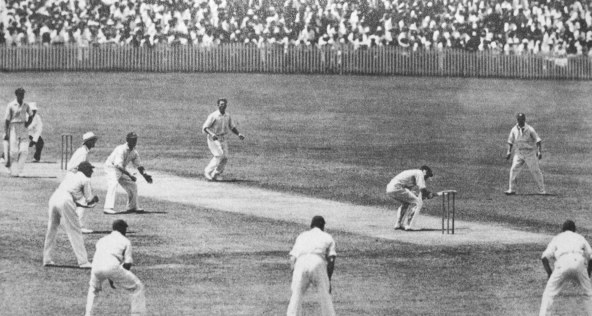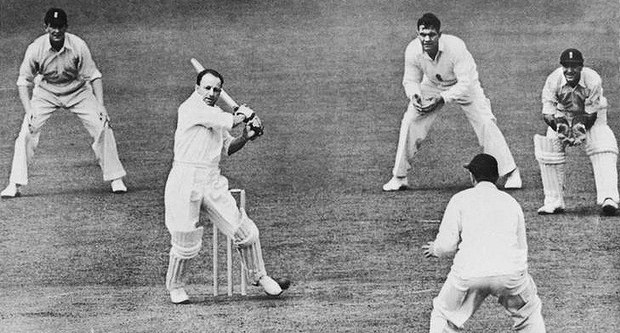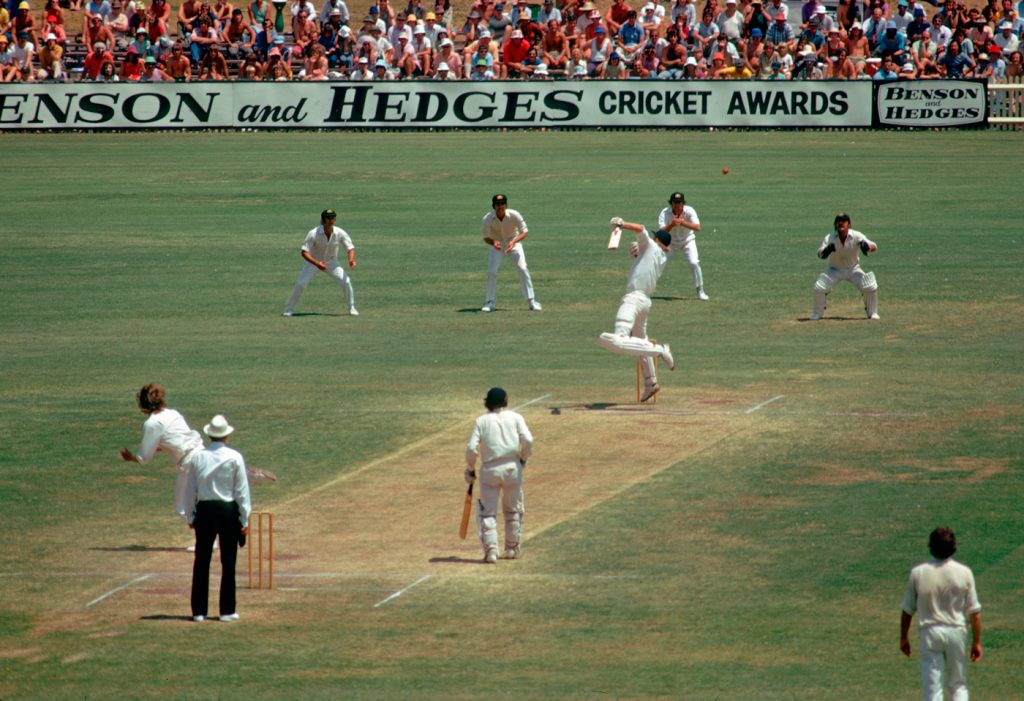From Bradman to Pietersen – Five most memorable Ashes series

In Test cricket, there is no other rivalry greater and more legendary than the Ashes. Every series and every Test between England and Australia is fought with vigour. It is one series which turns players into heroes or zeroes. It is one series where special performances are remembered for decades, not years. Continuing the long-standing tradition of 137 years, another chapter in the Ashes series begins tomorrow (1st August).
Australia thrillingly defeated England in England for the first time in 1882 and ‘Sporting Times’ published a mock obituary of English cricket which mentioned that the ‘Ashes’ will be taken to Australia. It took 20 more years for the term to be used regularly for an England – Australia series. Since 1882, the series has been played 70 times. There have been plenty of memorable encounters in the Ashes, here are our picks.
The Bodyline series, 1932-33

Image: Wikipedia
The most controversial Test series in cricket. The series damaged the relations between England and Australia to an extent that the existence of cricket in future was under a severe threat. The cause of furore was English captain Douglas Jardine employing a legal but unfair tactic.
In 1930, Don Bradman had bruised English egos by scoring 974 runs in just four Tests. It made Jardine believe that the Australian was unstoppable with regular bowling strategy. He decided to use leg theory which involved bowling at batman’s body with close-in fielders on the leg side.
With Harold Larwood as the spearhead, England won the first Test at Sydney by 10 wickets. Bradman had missed the first Test but returned for the second at Adelaide. He was out for a first-ball duck in the first innings but scored a century in the second innings to seal the win. England won the next three Tests and claimed the series 4-1.
The Australian media reacted fiercely to the English tactic and coined the term ‘Bodyline’. Australian cricket board sent complaints to Marylebone Cricket Club but those in England were unaware of the tactics employed. Once everyone realised the threat, several cricket laws were changed.
Also read: Ashes 2019: 1st Test Preview – The grand old rivalry returns
The Invincibles, 1948

Image – Wikipedia
After the Second World War, Australia were unbeaten for 11 consecutive Test matches before they departed to England for the Ashes. Don Bradman, leading the team, had expressed his desire to achieve the unprecedented feat of going through the five-month tour without a defeat. This was also his final tour as an active cricketer.
Australia completed their goal of staying unbeaten throughout the tour and won the Test series 4-0. Arthur Morris topped the batting charts while Ray Lindwall and Bill Johnston were the top wicket-takers.
Bradman himself scored 508 runs in five Tests at an average of 72.57 with two centuries. When he came out to bat for the final time in Tests, he needed only four runs to achieve a career batting average of 100. However, he was bowled for 0 by Eric Hollies at the Oval. Bradman retired with an average of 99.94, which became a holy number in cricket.
Lillee and Thomson decimate England, 1974-75

Image: Cricket Monthly
Australia’s hard-nosed captain, Ian Chappell, was eager to reclaim the Ashes after England had defeated them in the 1971 series. When the Englishmen arrived in Australia, Chappell had two weapons ready in his armoury. Dennis Lillee, coming back from a career-threatening back injury, and Jeff Thomson, a slingy bowler.
England lost the first Test by 166 runs. However, the bigger setback was the health of their players. Lillee-Thomson with their express fast bowling had taken out almost half of the English squad. Dennis Amiss, John Edrich and David Lloyd had broken hands, Keith Fletcher’s arm was badly bruised, Bob Willis had a groin strain and Peter Lever had injured a side muscle. The situation was so dire that they had to call back 41-year old Colin Cowdrey from England.
Australia went on to win the six-match Test series 4-1. Thomson ended with 33 wickets from the series while his companion Lillee had 25. In comparison, England’s top wicket-taker was Bob Willis with 17 wickets. This was Australia’s first series victory over England for ten years.
Also read: What makes the 2019 Ashes special?
Botham’s Ashes, 1981

Image: Sky Sports
Kim Hughes’ Australian side toured England in 1981. They won the first Test at Trent Bridge by four wickets and drew the second at Lord’s. English captain Ian Botham who had registered a pair (0 and 0) in the second Test was sacked from the captaincy and Mike Brearley took over the reins. The next Test at Headingley turned out to be a miracle.
In reply to Australia’s first innings total of 401/9, England collapsed to 174 all out. In the follow-on innings, they once again crumbled to 105/5. Botham, stripped of his captaincy, walked to bat without any baggage. Playing one of the most audacious knocks ever, the all-rounder scored an epic 149 not out. Australia, needing 130 runs to win, stumbled to 111 all out as Bob Willis snared 8/43.
Australia were set a target of 151 runs in the fourth Test at Birmingham. Once again, Botham rose to the occasion and grabbed 5 wickets for 1 run in 28 balls to complete the 29-run victory for England. Botham followed this with a 118 from 102 balls in the fifth Test as England cantered to a 103-run win. The all-rounder completed the 3-1 series win with another 10-wicket haul in the sixth Test.
The modern classic, 2005

Image: Sky Sports
The 2005 Ashes is widely regarded as one of the greatest Test series of recent times. It revived cricket in the UK to an extent and showcased what beauty Test cricket is. It began with a 239-run victory for Australia which remained their only win in the series.
Glenn McGrath took nine wickets in the first Test, proving to be a nemesis for English batsmen. However, he was ruled out of the second Test due to a freak injury in the pre-game warm-ups. England secured one of the closest wins in Test history as they won by two runs. Australia drew the third Test with the last pair at the crease.
The fourth Test at Nottingham proved to be the decisive encounter. In the final innings, England needed to chase down 129 runs which they did with seven wickets down. The 2-1 lead meant that a draw in the final Test was sufficient for England to claim the Ashes. Kevin Pietersen with a knock of 158 ensured a draw and the nation celebrated a home Ashes series win in decades.
